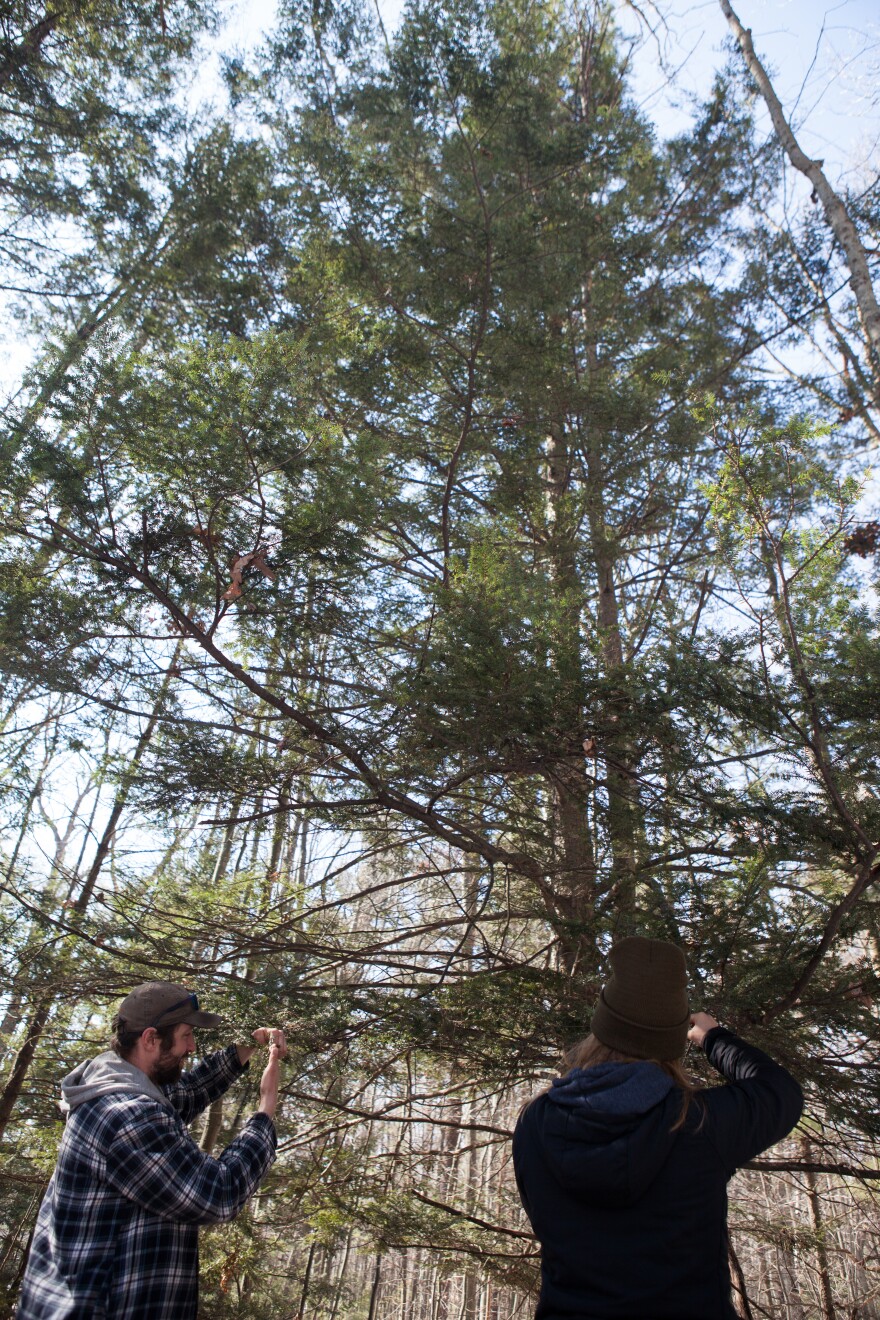Last month, a bug the size of a fleck of pepper was found in a hemlock tree in the Sleeping Bear Dunes National Lakeshore.
The invasive bug is called the hemlock woolly adelgid and it threatens Michigan’s 170 million hemlock trees.
Infestations have existed in southwestern Michigan for years, but last year it was discovered in Mason County and has since crept north of Ludington.
Foresters hope to hold the line there and keep woolly adelgid out of hemlock stands in northern Michigan.
To hold the line, people like Kara Ermatinger and Grant Trukowski spend their winter walking. And walking. Up and down dunes, dodging melting snow and ice puddles.
“This week has been pretty nice though with the warming up," says Trukowksi. "We’re not really trudging through snow, but still kind of battling the elements and the wind especially the last few days.”
Trukowski and Ermatinger work for the Mason-Lake Conservation District. Their full-time job from December through March is looking for the hemlock woolly adelgid or HWA.
The invasive bug from Japan can kill a tree within four years. It does this by sucking nutrients from the host tree.
Just last week, Kara Ermatinger found a small infestation here in Ludington School Park. It's on a tall eastern hemlock tree maybe 70 feet tall and it’s right by the trail that cuts through the park. Ermatinger says humans and deer can spread this little insect.

“We checked this tree pretty thoroughly, like more thoroughly than we would check a lot of other trees just because it is right on this trail and there’s a lot of traffic that moves through here,” she says.
This work is seasonal because during the winter, the insect hides itself in a white woolly-looking case. That ovisac is about the size of a sesame seed and easier to see than the bug itself.
Hemlock woolly adelgid was first discovered in Michigan in 2006 in Emmet County. That infestation was stamped out, but HWA has taken hold in southwest Michigan and has been creeping north.
Trukowski says so far they’ve surveyed about 31-hundred acres in Mason County and found about 10 infected trees. He says they try to be thorough, but admits there’s an element of luck to the whole process.

“Grabbing the right branch on the right side of a bigger branch can be the difference of finding it and not finding it sometimes,” he explains.
Most of Michigan’s 170 million hemlock trees are found in the northern part of the state and in the Upper Peninsula.
Foresters worry that as the hemlocks go, so will many other species of animals that rely on them.
Their huge branches create dense canopies of cover for deer and other mammals in the winter. Woodpeckers, owls and other birds often make the tree their homes. And the hemlock is often found near water, which is really important for fish.
“Because it provides a huge shading effect along our streams which keeps our waters cool and makes our fish happy that need that cold water – like our trout species,” says Dani McGarry, executive director for Mason-Lake Conservation District.
She says they hope to contain the HWA in Mason County to protect the forests Up North.
“Sort of like a spot fire or a wildfire, if you will," she says. "You need to get the edges first, and then push it towards the middle until you can contain the whole thing.”
Most foresters agree the hemlock woolly adelgid will probably still come north, just like the case in Benzie County. Birds, even the wind, can transport the tiny insects.
But also just like Benzie County, foresters hope these teams of surveyors will detect that spread early so they can treat the infected trees.
And they get some help from Mother Nature.
Due to the insulating effect Lake Michigan has it’s believed that the HWA can’t survive too far from the lakeshore. Research is still being done in that area, but really cold below zero temperatures have shown to kill off the invasive bug in the winter months. That’s why most surveying is done within five miles of Lake Michigan.
James Wieferich is a forest health specialist with the Michigan DNR. He says a lot of hemlocks will be lost to the pest in southwest Michigan, but he’s hopeful it’ll stop there.
“If we’re able to contain the HWA to the farther south, then we might be able to outlast HWA as it eats through its host trees, and eventually be able to remove it from the state,” Wieferich says.
For the trees that are detected early enough insecticide treatments work and can last between five and seven years, and that simply buys researchers more time.



